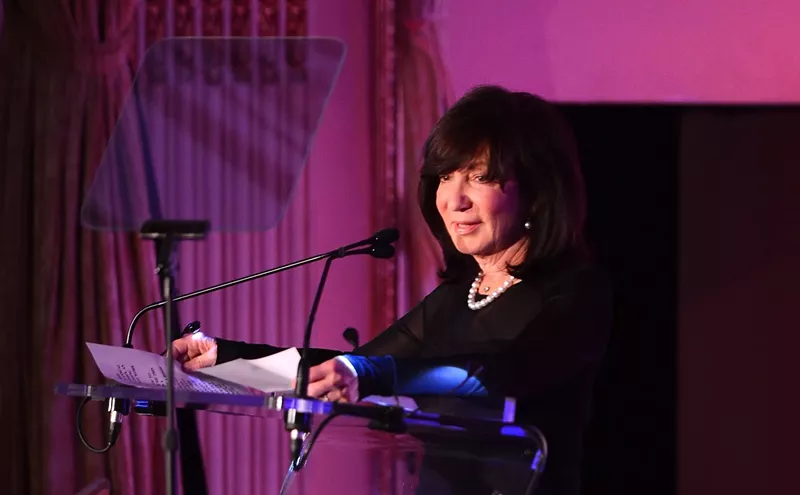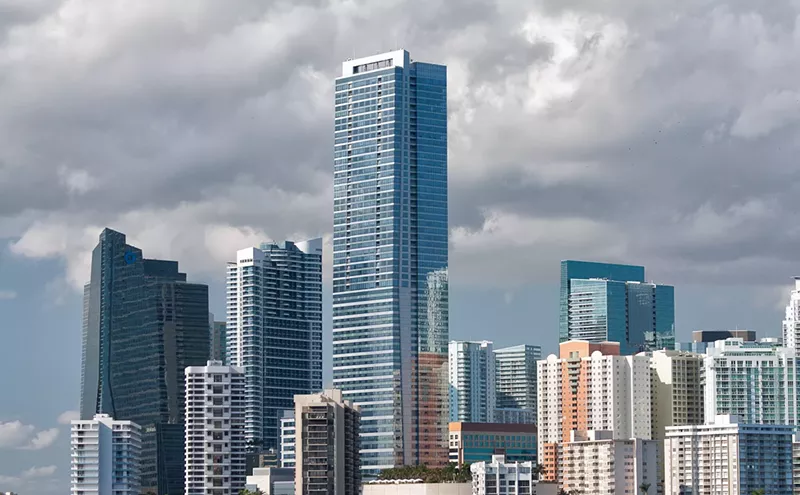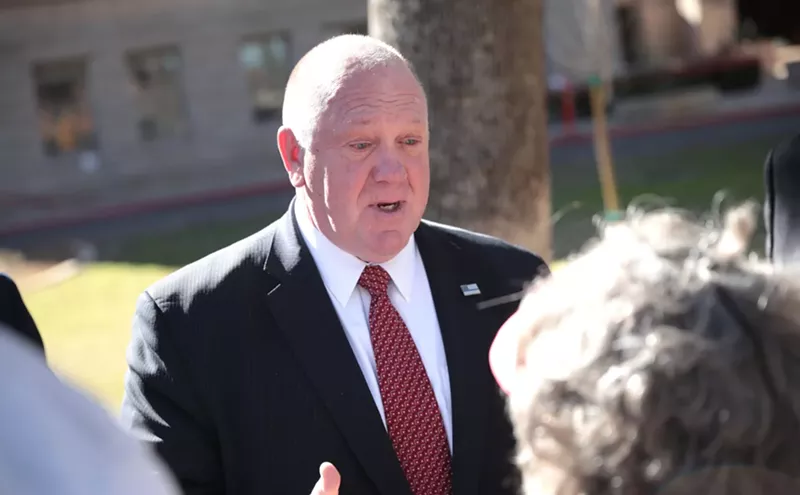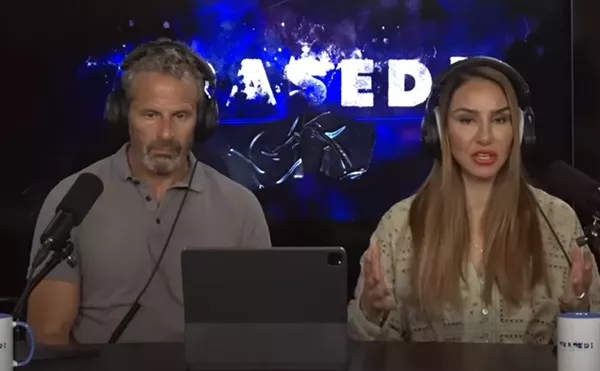The beef began with a fish. Fueled by liquor, it ended with Miami New Times owner Mike Lacey launching a bottle at its editor Jim Mullin.
"One of our sarcastic writers called [legendary newscaster] Ann Bishop 'a bossy old trout' in, I think, the first 'Best of Miami' issue," Mullin recalls. "It made Lacey crazy ... and after three or four or five bottles of wine, he took one of them and hurled it at me, screaming invective. There were witnesses."
That was two decades ago. Plenty more brawls would follow. During those years, South Beach bloomed, Brickell transformed, riots burned the town to ashes, and condo geniuses rebuilt it. A slug-it-out upstart, Miami New Times — which celebrates its 20th anniversary this week — became the city's whacked conscience.
A couple of brainy reprobates, Lacey and his partner Jim Larkin, founded the newspaper. Students at Arizona State University, they had been publishing Phoenix New Times since 1970 and purchased Westword in Denver 13 years later. Then, in 1987, they bought a South Beach rag named The Wave for $50 and a hot dog with plenty of relish. (Now the pair runs Village Voice Media, publisher of 16 alternative weeklies, including this one.)
Back then the Heat was just getting started. The Marlins didn't exist. A walk down Miami Beach's Lincoln Road revealed nothing more than empty storefronts, and a saunter south of Fifth Street — at any time of day — was a sure way to get mugged. A kilo of cocaine dropped from somebody's pocket at the port. Both John Paul II and Ronald Reagan visited the city in 1987; some people thought they were the same person.
The first issue of Miami New Times, dated December 2, 1987, included a gonzo (read: barely comprehensible) column by Hunter S. Thompson about Continental Airlines. Greg Baker, the paper's first and only staff writer, penned a preview of a U2 concert at the Orange Bowl. A garden apartment at South Pointe went for $350 per month, and some jerk who called himself "Guy of the Decade" tried to attract babes with a personal ad. That issue also included typically subtle headlines like "Does Castro Run Miami Too?" and "Why Does South Beach Still Suck?"
Mullin, who the year before had resigned from the San Diego Reader, came to Miami about that time. Then 38 years old, he had just returned from a Latin American sojourn where, he recalls, "I had vowed I would not be an editor again." But then Lacey wooed him with a stay at a Coconut Grove hotel that "was just the kind of place where drug dealers would do business, you know, with a Jacuzzi in every room.... All of my traveling had prepared me for Miami.... I loved the music and the whole Latin culture ... so I took the job."
He would lead the paper for nearly 18 years.
Soon New Times moved into an office that shared a wall with Miami's oldest bar, Tobacco Road. When musicians like blues great Charlie Musselwhite played next door, the desks shook. Many stories were conceived on the bar's patio — which explains a lot.
Sean Rowe, a lunatic reporter from North Carolina, worked with me at the Miami Herald in 1990. The daily newspaper won a Pulitzer that year for coverage of a cult killer named Yahweh ben Yahweh, and at the celebratory party, Rowe announced he was leaving to work for New Times, where, he said, "you can really write." Just a few months later, Rowe hopped a freighter to Haiti. He aimed to author a story about the place where bicycles and old furniture piled on Miami River ships end up. The product, called "My Ship of Fools," was printed December 19, 1990 (http://www.miaminewtimes.com/1990-12-19/news/my-ship-of-fools/). Then he came down with dengue fever. (Rowe, and I am not making this up, would later be hit by a train his last day at New Times. He survived and is preparing to publish his second novel.)
Kirk Semple, another New Times veteran, recalls arriving in Miami to work for the Associated Press and then quitting to write for this newspaper, where — during seven years — his best stuff may have been a two-part, almost book-length series about disgraced Miami Beach Mayor Alex Daoud ("The Haunting of Alex Daoud," October 10, 1996, http://www.miaminewtimes.com/1996-10-17/news/the-haunting-of-alex-daoud-part-2/). "The job with AP nearly cost me my enthusiasm for journalism and life," says Semple, now a national correspondent for the New York Times. "Mullin saved me. I could have slipped out of journalism altogether, but a large part of the reason I stayed is that it was so much fun."
Some stories were, um, less than serious. In 1997 the paper set up a fake committee to sell the Marlins, recalls then-Managing Editor Tom Finkel (now editor of the Riverfront Times in Saint Louis). Letterhead was created, a fake phone voicemail box was set up, and missives were mailed to the mayors of dozens of cities without baseball teams, inviting them to bid for the team. The resulting story, "Go Marlins" (August 14, 1997, http://www.miaminewtimes.com/1997-08-14/news/go-marlins/), detailed the trickery. It was penned by several staff writers, including Jim DeFede (later a Miami Herald columnist and radio host), Robert Andrew Powell (now an author), and Ted Kissell (now editor of OC Weekly, another Village Voice Media paper). "[Providence Mayor] Buddy Cianci swallowed it hook, line, and sinker," Finkel recalls. "Back then the paper was manned by this motley crew of savants."
I took Finkel's place as managing editor in 1997. By then the place was maniac heaven. One of the first writers whose work I edited — Kirk Nielsen — penned stories about the Everglades, Cuban terrorist groups, and Coral Gables social clubs — working closely with me on each one. Though we didn't know it at the time, years later Kirk would discover a photograph showing we had attended summer camp together — in Minnesota in 1970 — the same year Lacey started Phoenix New Times.
Miami is a city that reinvents itself every few years. Indeed between the time I left town in 2000 to edit New Times Broward-Palm Beach and my return two years ago, the place went from cultural wasteland to visual arts mecca. Miami New Times, though, has become a constant — brassy, iconoclastic, and, well, sometimes tasteless.












